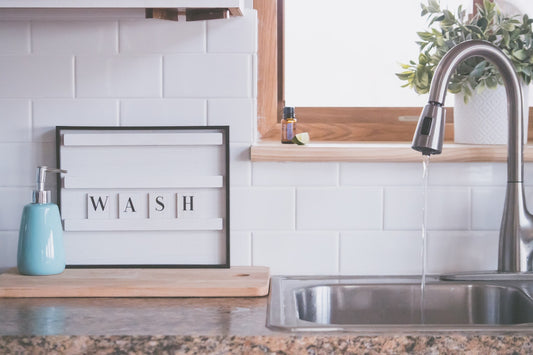Troubleshooting and Repairing Common Issues with Water Softeners
If you live in an area with hard water, you likely understand the importance of a water softener. These devices play a vital role in removing minerals like calcium and magnesium, which can cause limescale buildup, damage appliances, and leave soap scum on surfaces. However, like any other appliance, water softeners may encounter problems over time. In this blog post, we will explore common issues that can arise with water softeners and provide you with troubleshooting tips and repair solutions to ensure your system functions optimally.
Understanding Water Softeners
Before we delve into the troubleshooting and repair process, let's have a basic understanding of how water softeners work. Water softeners operate through an ion exchange process, where resin beads inside the softener tank attract and remove minerals responsible for hardness. These minerals are replaced with sodium or potassium ions, resulting in softened water.
Common Water Softener Issues and Solutions
-
Reduced Water Softening Efficiency: Issue: If you notice that your water softener isn't softening water as effectively as before, it could be due to several reasons. Solution: Start by checking the salt level in the brine tank. Insufficient salt can hinder the regeneration process. Make sure to maintain an adequate salt level and regularly clean the brine tank to prevent clogs and salt bridging.
-
Salt Bridges: Issue: A salt bridge occurs when a hardened layer of salt forms at the top of the brine tank, preventing proper regeneration. Solution: If you suspect a salt bridge, use a broom handle or a long, non-metallic object to break it up. Remove the loose salt and carefully rinse the tank before refilling it with salt.
-
Resin Bead Fouling: Issue: Over time, resin beads in the water softener tank may become fouled with sediments, iron, or organic matter, reducing their effectiveness. Solution: Perform a resin bed cleaning using a water softener resin cleaner or iron-removing cleaner. Follow the manufacturer's instructions and run a manual regeneration cycle to flush out any loosened particles.
-
Clogged Injector or Venturi: Issue: The injector or venturi, responsible for drawing brine from the tank during the regeneration process, can become clogged. Solution: Clean the injector and venturi assembly by removing them from the brine line. Soak them in a vinegar solution or use a small brush to remove any debris. Reassemble the parts and check for proper functioning.
-
Valve or Control Malfunction: Issue: If the control valve is not functioning correctly, it can lead to problems like improper regeneration, inadequate water flow, or leakage. Solution: Check the power supply and ensure that the control panel settings are correct. If the issue persists, consult the manufacturer's manual or contact a professional water softener repair technician to diagnose and repair the valve or control unit.
-
Brine Tank Overflowing: Issue: If your brine tank continuously overflows, it can indicate a malfunctioning float assembly or control valve. Solution: Inspect the float assembly for any obstructions or damage. Clean or replace the float if necessary. Additionally, check the control valve settings to ensure they are appropriately adjusted. If the problem persists, seek professional assistance.
-
Water Pressure Problems: Issue: Low water pressure throughout your plumbing system could be a symptom of a water softener issue. Solution: Check if the bypass valve is closed and fully open it if necessary. Examine the inlet and outlet valves for any restrictions or blockages. Clean or replace them if needed. If the problem continues, consult a professional plumber to evaluate your water softener system and plumbing setup.
Conclusion
A water softener is a valuable appliance that helps combat the negative effects of hard water. By understanding common issues and employing the appropriate troubleshooting and repair solutions, you can ensure the optimal functioning of your water softener, providing you with the benefits of softened water throughout your home. Regular maintenance and prompt repairs will extend the lifespan of your system and improve the quality of water you use every day.






